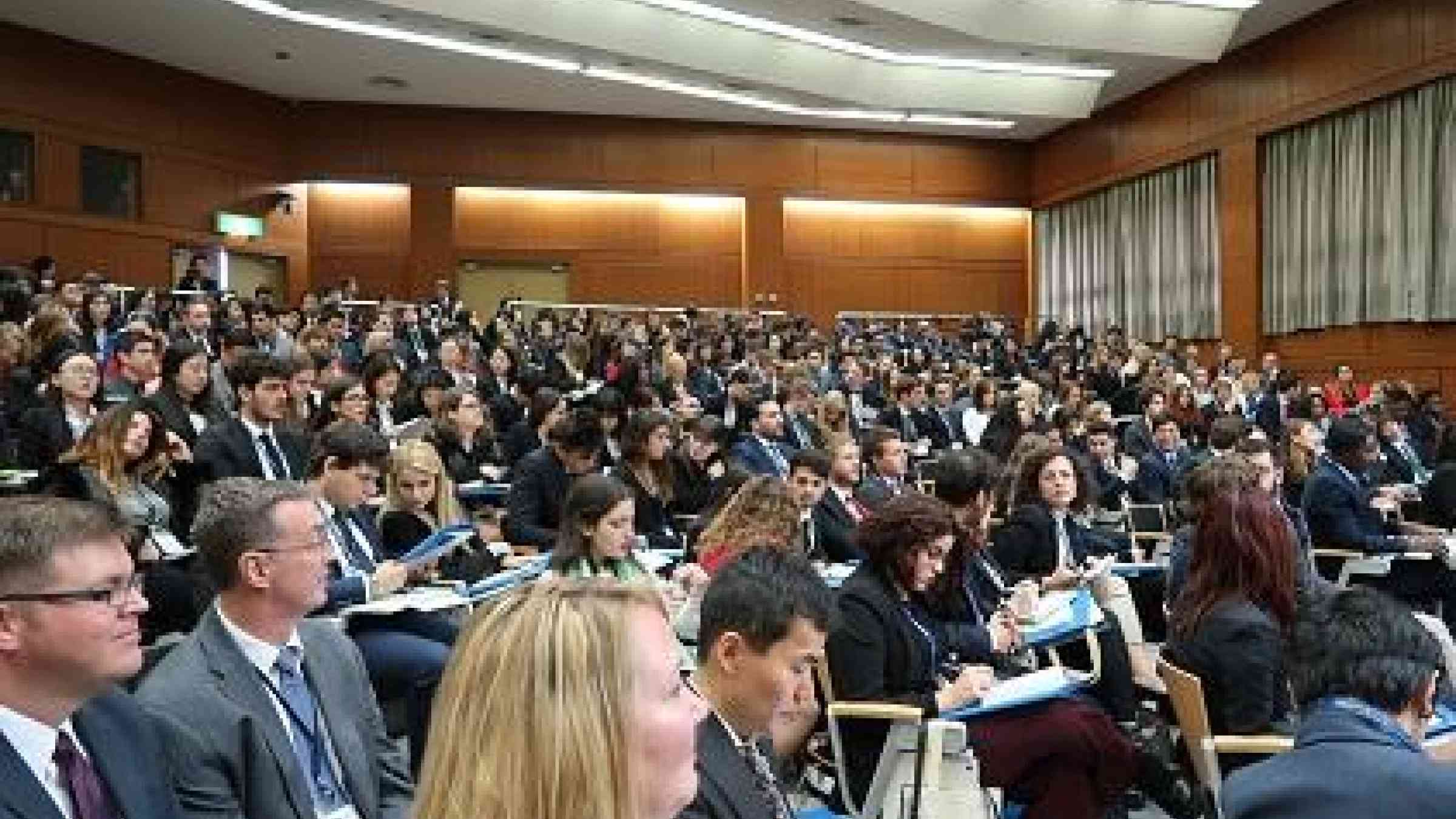Risk in focus at model UN

KOBE, Japan, 28 December 2016 – Hundreds of university students from around the world have set their sights on reducing the risk of disasters, during the first-ever edition in Japan of the National Model United Nations.
The 350 students from institutions in 11 countries – Canada, Chile, China, Czech Republic, Germany, Italy, Japan, Philippines, Russia, Slovenia, and the United States – took part in a special forum entitled “Mainstreaming Disaster Risk Reduction”.
The National Model United Nations, which enables participants to role-play the work of the real UN, took place over the course of four days at the end of November. It was hosted by the Kobe City University of Foreign Studies (KCUFS).
Ms. Sachiho Tani, a 24-year-old Kobe senior who played the role of the UN Secretary- General in the National Model United Nations, said the forum on disaster risk reduction was a powerful event.
“I’m sure the participants from all over the world realised practical ideas for what disaster risk reduction really means for sustainable development, how each sector actually works based on the concept, and how they can significantly collaborate with each other in order to make it work more efficiently,” said Ms. Tani, who was among the students that proposed the theme when planning got underway a year ago.
The theme of disaster risk reduction is particularly important for Kobe, which was hit by the catastrophic Great Hanshin-Awaji Earthquake in 1995. A decade later, it hosted the 2nd UN World Conference on Disaster Reduction, where the international community adopted a landmark agreement on curbing the impact of hazards, the Hyogo Framework for Action.
Japan also hosted the 3rd UN World Conference on Disaster Risk Reduction, in 2015 in Sendai, a city that had been struck hard by the 2011 Great East Japan Earthquake and Tsunami. The result of that summit was the Hyogo Framework's successor, the Sendai Framework for Disaster Risk Reduction, a 15-year agreement that is the globe’s most wide-ranging blueprint to date for curbing the impacts of natural and human-induced hazards.
A panel discussion at the forum featured three key disaster risk reduction actors from Japan: Professor Yoshiaki Kawata of Kansai University, who is the Executive Director of the Disaster Reduction and Human Renovation Institution (DRI); Mr. Kimio Takeya, Distinguished Technical Advisor to the President, Japan International Cooperation Agency (JICA); and Ms. Sandra Wu, Chairperson and CEO of Kokusai Kogyo Co. Ltd. and a board member of UNISDR Private Sector Alliance for Disaster Resilient Societies (ARISE).
The three experts shared critical aspects of disaster risk reduction as a global challenge through the diverse lenses of the education and research sector, international cooperation, and the business perspective.
Such outreach to young people is a vital way to ensure that disaster risk reduction remains an important part of the globe’s political agenda, given that they represent the next generation of potential leaders of cities, countries and the international community.
Forum participants also discussed the establishment of World Tsunami Awareness Day by the UN General Assembly in 2015 thanks to advocacy by Japan, as well as the 60-year relationship between the United Nations and Japan, issues that were highlighted by Ms. Kaoru Nemoto, Director of UN Information Centre in Tokyo.